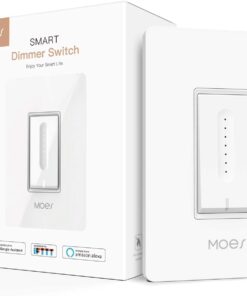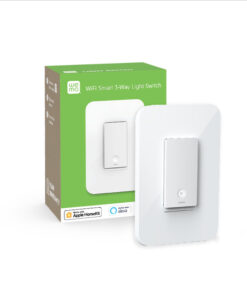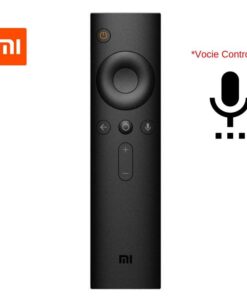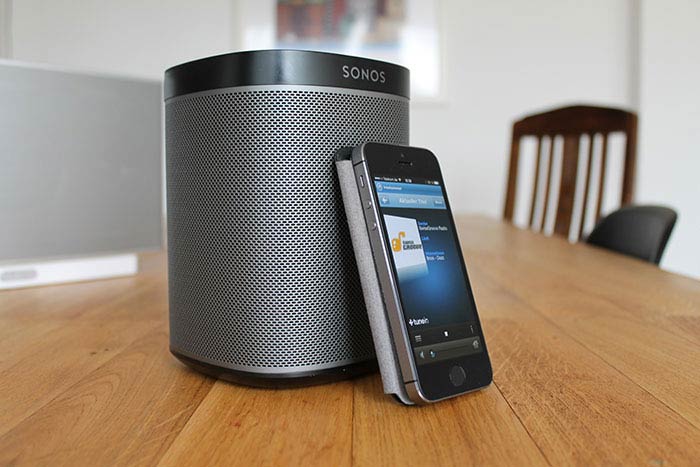-
×
 MOES WiFi Smart Light Dimmer Switch,Compatible with Alexa Google Home for Voice Control,No Hub Required
1 × ₹ 5,999.00
MOES WiFi Smart Light Dimmer Switch,Compatible with Alexa Google Home for Voice Control,No Hub Required
1 × ₹ 5,999.00 -
×
 Wemo Smart Light Switch 3-Way,works with Alexa,Google Assistant & Apple Homekit
1 × ₹ 9,499.00
Wemo Smart Light Switch 3-Way,works with Alexa,Google Assistant & Apple Homekit
1 × ₹ 9,499.00 -
×
 Xiaomi Bluetooth Voice Search Remote Control Bluetooth 4.0 for Mi Box 3 & Mi Smart TV
1 × ₹ 2,499.00
Xiaomi Bluetooth Voice Search Remote Control Bluetooth 4.0 for Mi Box 3 & Mi Smart TV
1 × ₹ 2,499.00
Uncategorized
SONOS Play:1 Wireless Smart Speaker Review
Sonos Play:1 is a stylish and exceptionally well-made wireless smart speaker, especially for the price. It offers the full Sonos experience, with support for most key services (including Spotify, Pandora, Rdio) and super-reliable wireless streaming. Sound quality is good considering the size and gets even better when paired with a second Play:1 for true stereo playback. And Sonos Controller apps are available for Android, iOS, Mac, and PC.
Design: A lovely compact speaker
The Play:1 is the best-looking Sonos speaker yet. The Play:3 and Play:5 both have a refined look that tends to blend well into your home decor, but can sometimes feel just a touch bland. The Play:1 has the signature Sonos look, but adds just a little bit of stylish sizzle, especially the black model. (It also comes in white.) It looks at home in a kitchen, bedroom or living room, and it’s humidity-resistant, so it works as a bathroom speaker, too.

You’ll notice its heft as soon as you pull it out of the box and although the cabinet is essentially all plastic, it never feels cheap. Even the power cord on the bottom has a nifty design, tucking into the bottom for a seamless design. Despite the weight of the Play:1, note that there’s no battery built-in. The Play:1 is designed to be placed in a room and left there.

There’s a slight change to the standard Sonos controls on the top. The familiar volume rocker and status light remain the same, but the Mute button has been replaced with Play/Pause. It’s a smart change, since it still immediately quiets the speaker, plus you have the option to resume whatever you were listening to with a single touch, even if it’s hours later. (Sonos is also releasing a firmware upgrade to change the functionality of the Mute button to Play/Pause on its existing speakers.)

Behind the nonremovable grille, there’s a mid range woofer and a tweeter. That makes it Sono’s first “mono” speaker, although you were unlikely to hear much true stereo separation on the other models, especially the Play:3. It’s also powered speaker, so there’s no need for speaker wire or a separate amp, plus you can sync it with a second Play:1 for true stereo pairing.
Setup: As painless as wireless audio gets
If you’ve already got a Sonos system, adding the Play:1 is as easy as you’d expect: tell the app you want to add a speaker, press the volume-up and Play buttons when prompted, and you’re good to go. It’s seriously that easy.
If the Play:1 is your first Sonos, you have have two choices: you can plug in an Ethernet cable to the speaker’s backside, or you can connect it to your Wi-Fi network. That second option is a new feature as of a September 2014 software update; previously, at least one Sonos component needed a wired connection. Now, if you’ve got three or fewer Sonos units on your network, you’ll probably be fine on Wi-Fi. If not, you can invest in a Sonos Bridge ($50/AU$75) with a wired connection.

While other systems have tried to make a virtue of running on your existing Wi-Fi network, Sonos’ mesh network is really a strength. It may seem redundant to have a wireless network dedicated solely to stream music, but you can’t argue with its reliability and low latency.
You’ll also have to configure the Sonos to find your personal music collection. If it’s stored on your PC, it’s as easy as pointing it to the right folder, although note that you’ll need to leave your computer running to access that music. You can also have Sonos pull music off a network attached storage (NAS) device, although setup is slightly more difficult — I needed to input the network address of my NAS. It supports a reasonably large assortment of file formats (including FLAC and Apple Lossless), although high-resolution audio isn’t supported.
What can you stream?
Sonos has all of its competitors beat when it comes app support. Many major services are supported, including Spotify, Pandora, Amazon Cloud Player, Rdio, SiriusXM, TuneIn, iHeartRadio, Stitcher, Rhapsody, MOG, Slacker, and Last.fm, plus plenty of neat niche services such as Wolfgang’s Vault, Songza, 7Digital, 8tracks, Murfie, batanga, aupeo!, Dar.FM and Hearts of Space. For comparison, Samsung’s Shape M7 supports only Amazon Cloud Player, Pandora, TuneIn Radio, and Rhapsody; Bose’s SoundTouch only supports Pandora.
Some of the streaming limitation and support for high-profile services it lacked support earlier have also been added. YouTube has announced that, starting today, YouTube Music is now available within the Sonos app and can be played on all Sonos speakers. Users with a YouTube Music Premium or YouTube Premium subscription will be able to stream albums, remixes, covers, playlists, and more to their Sonos speakers. , including Google Play Music, Apple Music,Amazon Music, Gaana, Saavn, and even Bandcamp.
Granted, YouTube is the biggest music streaming platform on the internet, but much of that traffic comes from free accounts, not people paying for Premium services.
YouTube Music for Sonos is now available in all countries where YouTube Music Premium and YouTube Premium are available. Here is a complete list of Supported streaming Services that is available on Sonos Today
The apps: Widely available,
The Play:1 is controllable by Sonos’ Controller app, which is available on iOS, Android, OS X, and Windows.
The app offers up a lot of flexibility — letting you stream different music to different room or sync the same songs everywhere — but it can take some time to get used to. For example, on the Android app, if a track is currently playing and you’d like to listen to something else, you need to press a tiny nondescript button in the upper left right hand corner, select Music, then you can navigate to the music you’d like — it’s not intuitive at all. The experience is more straightforward on iOS, especially the iPad, with its generous screen space making the multi paned layout feel less cramped.
Sound quality: A potent small room speaker
On its own the Sonos Play:1 is an excellent small speaker, offering pretty much class-leading sound quality for a wireless speaker of this price and size.
Each Sonos Play:1 has two drivers, a mid-range/bass driver and a smaller tweeter. Traditional bookshelf speakers use the same arrangement. However, its main driver uses stronger-than-average magnets to allow the speaker cone to move back and forward further than normal.
It helps give the Sonos Play:1 excellent, rich and meaty sound for its size. Voicing is fairly neutral, but the depth and scale of the bass the speaker is able to produce is very impressive.
I’ve used the Sonos Play:1 on and off since it launched years ago. I’m impressed by the depth of the bass and its ability to fill rooms with ease every time I plug it back in.
It’s a very enjoyable listen, with enough finesse, a rich enough tone and more than enough punch to make you forget the size of the speaker you’re listening to. This little guy sounds unusually at home playing at high volumes, and I believe many people would be happy to use this as their main music source. It’s something to consider if the price of the excellent Play:5 is off-putting.
Treble is a little soft, without the piercing clarity you often get with a dedicated tweeter. However, I take this as a sign Sonos has done its best to work with the compromises of a relatively small speaker, to make it sound as big and satisfying as possible.
Others take a different approach. For example, the Riva Arena sounds a lot more detailed and refined than the Sonos Play:1 at low volumes. It has a more hifi-like timbre, and greater finesse.
However, as volume is increased the Sonos sound scales up much better. The Riva Arena starts to sound strained before the Play:1, and doesn’t have the same sense of scale. It can’t fill mid-size rooms anywhere near as well.
Any speaker the size of the Play:1 has to deal with a compromise or two. But Sonos has nailed it here.
Should I buy the Sonos Play:1?
The Sonos Play:1 is a great little speaker. We have no hesitation in recommending the Play:1 if you find the Play:5 too pricey. It works just like any other Sonos Play-series speaker, and offers excellent sound for both the size and price.





